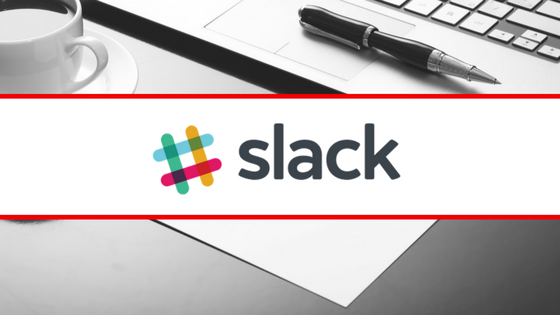Top 9 Best Business Apps for Internal Communication
Posted by Tim Smith in Business Continuity on February 9, 2018
Updated on August 10, 2022

For businesses, communication is key. To reach your organizational goals effectively, it’s important that everyone involved can communicate with one another. The internet, and especially the rise of mobile, has made communication more instant and more effective than ever before. Today, web and smartphone apps can supercharge your company’s internal communications, helping streamline your efforts to improve efficiency, productivity, and ultimately, your bottom line.
Versatile Options for Communication
Instead of relying on a company intranet, organizations can take advantage of a variety of programs designed for business communication. There are apps available for instant messaging, email-style message threads, and even sending out notifications via SMS text message or phone call. By leveraging more than one available app, businesses can streamline and enhance internal communications for better team cohesion and improved productivity.
Business Apps for Internal Communication
These nine business communication apps, available on mobile devices and desktop computers, provide a reliable and versatile way for employees to communicate effectively with one another:

1. Slack
Slack has quickly become one of the most popular project management and collaboration tools, especially for companies with remote workers. This cloud-based team communication app actually originated as an internal communication tool for a small game development company. Launched in 2013, it’s now one of the most popular ways for internal teams to collaborate. Slack features chat rooms organized by topic, private groups, and direct messaging. Files, groups, and members are all completely searchable, making it easy to pull up previous conversations. It’s available for web, iOS, Android, and Windows Phone. [slack.com]

2. HipChat
HipChat is another popular team communication app, accessible from web or mobile anywhere in the world. It’s available in a freemium version, but there’s also an inexpensive paid version that adds extra features. Designed to integrate with Google Drive, Facebook, Dropbox, and other popular software, it’s a versatile and affordable option that’s a great choice for small businesses. [hipchat.com]

3. Basecamp
Basecamp bridges the gap between staff and clients. It’s designed to make it easy for people in different departments within a company to share files and collaborate on projects. By consolidating internal communications, project management, and client relations in one place, it provides an efficient and streamlined solution for managing a variety of internal communication and collaboration needs. Basecamp’s discussion boards eliminate the need for complex, hard-to-navigate email chains by consolidating discussion about a subject in one place. It also manages tasks and to-do lists for staff members. [basecamp.com]

4. DialMyCalls
DialMyCalls makes it easy to send out mass notifications via phone call or SMS text message. Many businesses use DialMyCalls to send out important notifications to employees, or to remind staff of upcoming events, meetings, or due dates. It’s also useful for reaching out to employees to cover shifts when someone gets sick or needs to miss work because of a personal emergency.
DialMyCalls can also be used to implement an inbound complaint line, helping companies curb harassment, bullying, and dysfunctional management in the workplace. It works like a virtual suggestion box, allowing employees to use two-way text messaging or a custom vanity phone number to place a complaint anonymously. This can help businesses gain valuable insight into causes of worker dissatisfaction, informing new initiatives to improve their organizational culture. [dialmycalls.com]

5. RedBooth
RedBooth is primarily a task tracking application, but it also features built-in chat software for instant communication between team members. Workers can communicate in the same window as a task assignment, helping to keep the chat productivity-oriented. [redbooth.com]

6. Wrike
Wrike is a project management app, with built-in communication tools. Members can “@-message” one another through the task pages and activity stream, making it simple to keep in touch about projects. [wrike.com]

7. Skype
Skype is widely used for business communications. This text, voice, and video chat application is available on desktop and on mobile, it’s a good way for teams to stay in touch. Instant messaging lets staff connect with one another at any time, removing wait times for important answers and information. It also has a simple file sharing feature. Because most people are already familiar with Skype, there’s no learning curve involved. [skype.com]

8. FlowDock
FlowDock is another option for a combination project management and internal communication tool. Its versatile chat feature allows for multiple flows of conversation, with desktop and mobile notifications. [flowdock.com]

9. Azendoo
Azendoo is a task tracking and communication app that’s useful for marketing and design teams. Designed with marketing agencies in mind, its chat feature is similar to Facebook’s private messaging. [azendoo.com]
Business Communication in the 21st Century
With the rise of the internet and mobile communications, it’s easier than ever for businesses to implement effective strategies for fast, effective internal communications. From combination project management and communication platforms like Slack and Basecamp, to notification systems like DialMyCalls, staff can communicate instantly to streamline workflows and improve overall productivity.
Sign Up For A Free Trial Today!
Get Started
Recent Posts
Categories
“I am a youth minister and have spent hours in the past calling students individually to remind them of an upcoming event or to get out an urgent announcement. With DialMyCalls.com, I cut that time down to about 1 minute. I also love how I can see exactly who answered live and how long they listened so I know if they heard the whole message. DialMyCalls.com is the best website I have stumbled upon all year! Thanks!”
Central Baptist Church
Sign Up For A Free Trial Today!
Get Started
Sign Up For A Free Trial Today!
Get Started
Recent Posts
Categories
“I am a youth minister and have spent hours in the past calling students individually to remind them of an upcoming event or to get out an urgent announcement. With DialMyCalls.com, I cut that time down to about 1 minute. I also love how I can see exactly who answered live and how long they listened so I know if they heard the whole message. DialMyCalls.com is the best website I have stumbled upon all year! Thanks!”
Central Baptist Church
Sign Up For A Free Trial Today!
Get Started


